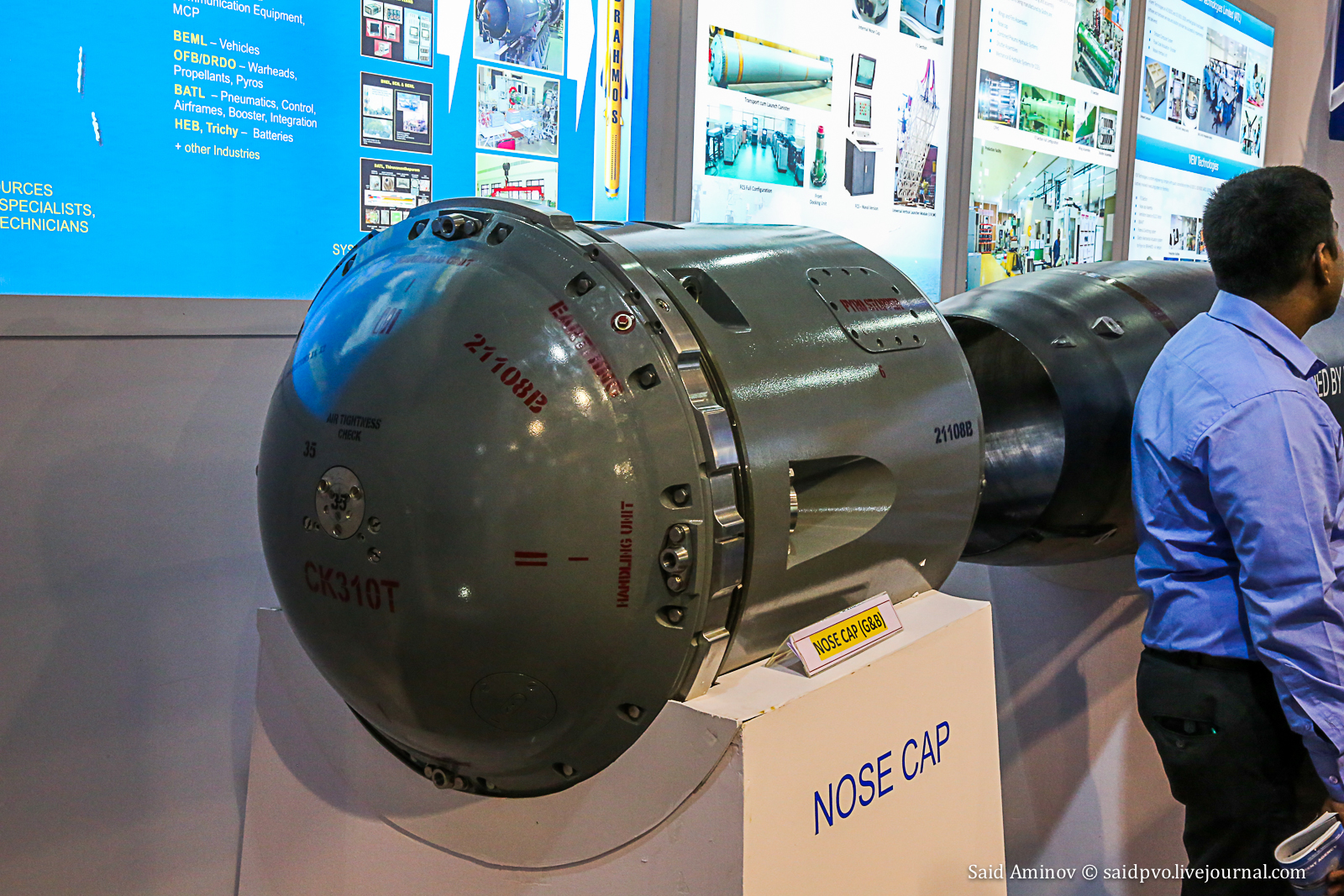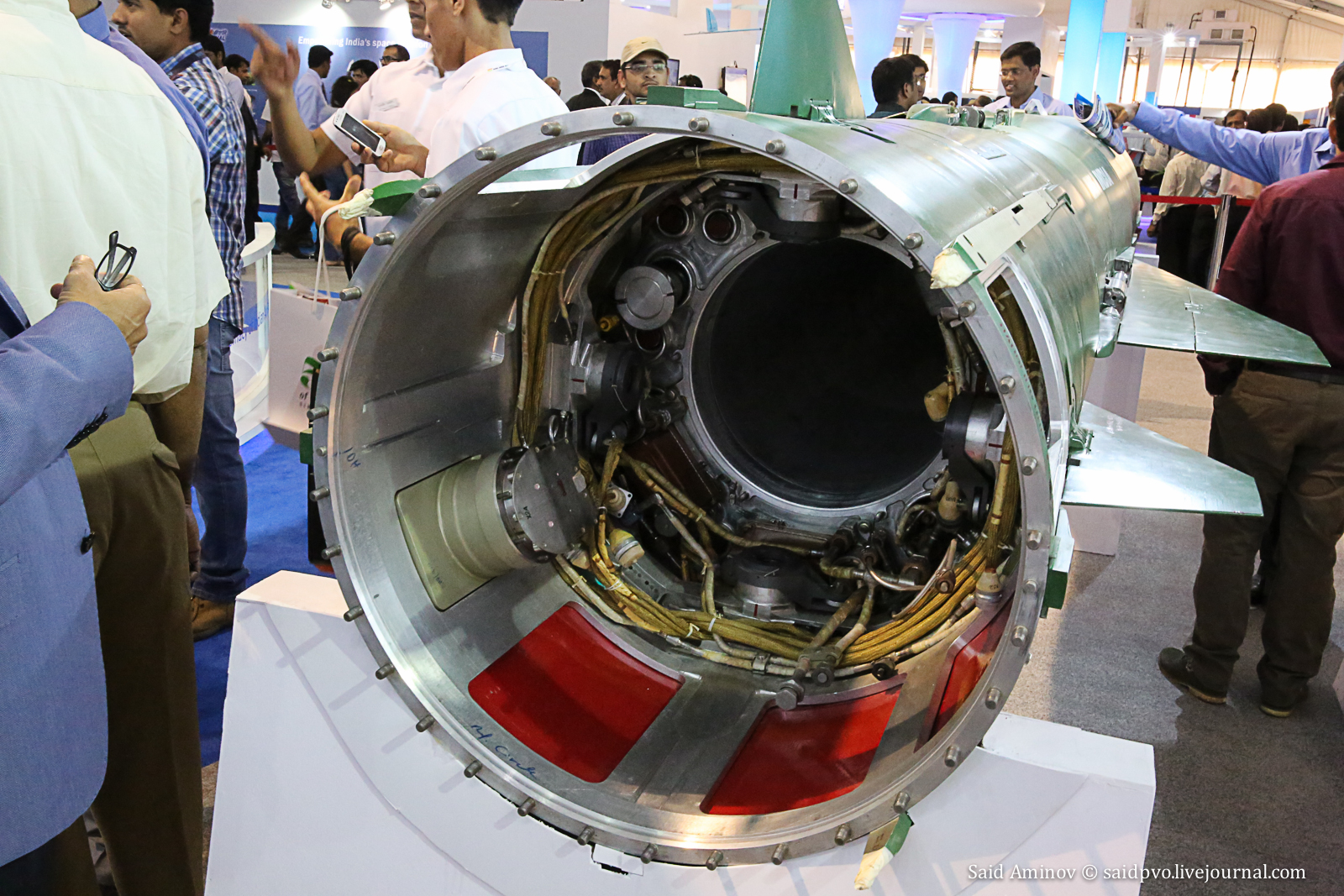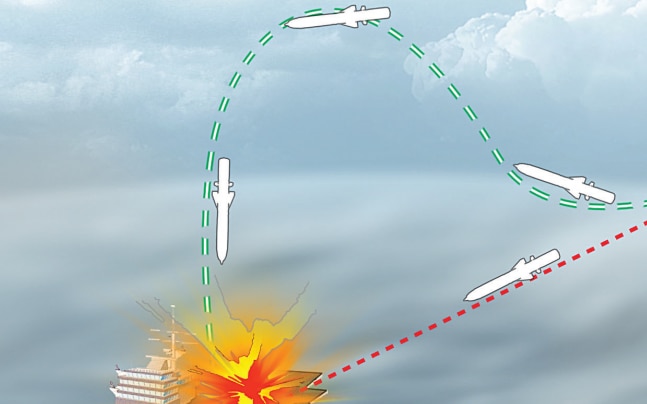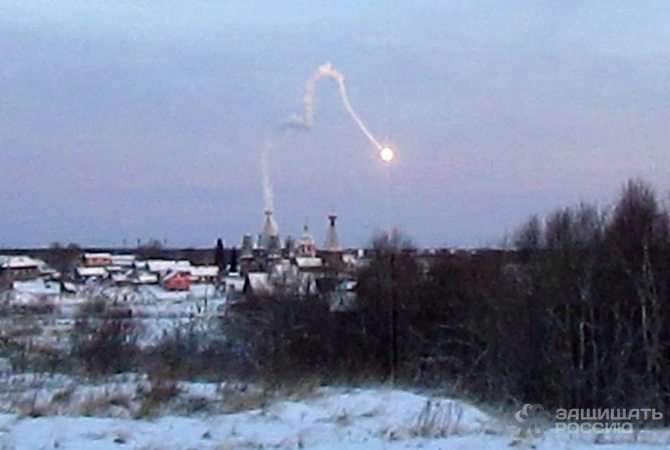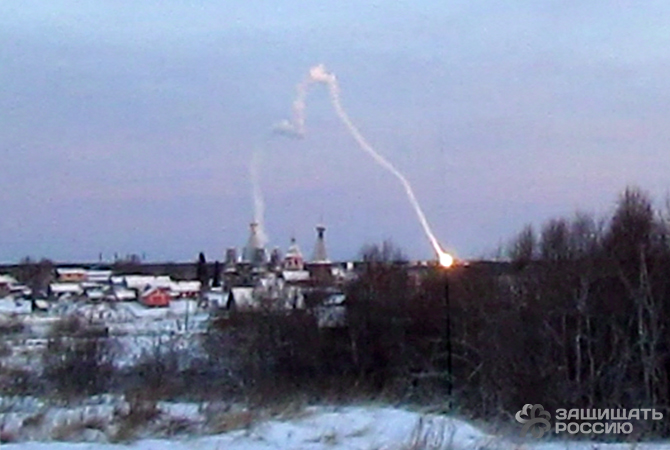Complex 3K-22 Zircon / Zircon-C, 3 M-22 rocket
Interspecific missile system with a hypersonic missile / anti-ship missile operational use. To available information According, the development of the complex is being of "the NPO Machine Building" (
East -. Annual the Report, page 15 ). For first application of The the development of the complex in the media to refer to February 2011. There WAS Also not Officially confirmed the Assumption That the export version of the missile "Zircon mounted" is an RCC "
of of BrahMos-II of of ". Until 2012 WAS Also a there hypothesis That the complex yavlyaeetsya by successor complex "
Bolide " the development of the NPO Machine Building ".
With In 2011, the NGO" Engineering "as part of the Directorate 15-51 was organized by a group of leading designers on 3M - 22 by by Sergei Bunakov, Denis Vitushkin, Yuri Vorotyntseva and Alekseem Naydenovym (
-source ) with In the Same | 2011, seems to have developed a draft design of the complex "Zircon-C", and, accordingly, the preliminary designs of the complex subsystems Part .. D - "Zircon mounted-the C-ARC" and "Zircon mounted-the C-the RV" to Fulfill Structural HRCT division - UPKB "the Detail" (
-source ) of As of the 2011 serial production in the coming years missiles of "Zircon" is planned. AT "Strela" (Orenburg,
East -. Annual the Report, page 15 ) the complete the Establishment of the missile system is until, 2020. Planned.
according to the analysis of the information on are subject for the: second the half of 2012 has been suggested that the topic of "Zircon" either closed or changed . the actual evidence for the this Assumption WAS not, But IT is likely to That IT WAS the of a closing work on the topic Could for Contents Technical Reasons lo a cause the appearance of the Government's Proposals for the Unification of the the ICD "the Rainbow" from "the NPO Machine Building" for the Organization of work on hypersonic.
May 25, 2013, the this information has Been adjusted
-source : the development of the complex according to off-plan Continues, But DURING 2012 there was a pause caused by technical problems . Direct connection with the reorganization of work on hypersonic and the situation with the theme of OCD or research "Zircon" no. "We now have before is the concept of hypersonic technology, which introduces GZLA classification, the priority development of various technologies and materials for GZLA. The main focus of the first stage, of course, taken the development of the system that has been tested by us. of the REST of the direction yet scheduled as with the experimental with the Conditions creation of the demonstrators. HOWEVER, the the existing a backlog of in Them is consistent with international standards. No less See by important than the Conditions creation of Technologies, materials and Demonstrator s, now! Just the development of OTHER concepts - Concepts of combat use of hypersonic weapons systems necessary to answer the question -. Why do we need such a system, how they should be applied, in any form and manner which the objectives will be achieved by the application and the main question - . in what is the uniqueness of Systems for These and what tasks for They CAN Decide feature to impossible impossible That IT is to the solve the the existing weapons Systems. "
of the message
-source from the July 15, 2015 stated the readiness to test RPC "Zircon ". Probably, it is a full-flight development tests. Flight tests of the media began in the autumn of 2015 (
source , 2016). 2.19.2016, the media-source
reports That are Already flight-design tests rocket state AT the end of the which a Decision is made on the Adoption of a rocket "Zircon mounted" Adopted Russian Navy ships. April 19, 2016 reported that the missile "Zircon", state that the test will be completed in 2017, in 2018 be put into to serial production (
source ).
February 8, 2017 the media reported about the plans of the test missile launch "Zircon" a sea carrier spring 2017 It is reported that previous rocket is launched from the Plesetsk test site, which is contrary to the existing environment in the expert views (
source ).
These are tentative and are at best prikidochnymi . Sources indicated. Identification missile 3M-22 - -source . references to the index 3Q-22 - -source .
Model BrahMos-II rocket on display DefExpo - 2014 05.02.2014 of (
http://www.brahmand.com/ ).
Estimated table hypersonic missile tests:
Model of a missile BrahMos-II on the opening day Aero India 2013, Bangalore, 6/2/2013 (photo The - Shiv Aroor,
http://livefist.blogspot.ru ).
Equipment the Starter - Modernized on missile cruiser pr.11442M an assumed application Missiles 3M-22 vertical launcher Universal from launch UVLM 3C-14-11442M (
-source ). That media of Reported of The the a rocket a must the the BE "Achieved the universality of the Defeat is of sea and land targets, as with the with the a a well as with the with the the Unification of the types of start - of An An underwater, surface, ground" (
-source 2016). I believe that is supposed to use a slightly modified (probably designed for large starting load) launcher vertical launch 3C- 14 UKSK (May 2017) for the application of missiles "Zircon ".
Of of The control system and Guidance : with with In 2011, the NGO "Granit-Electron" is designed to create a preliminary design of autopilot systems and inertial navigation (Sain) for 3M22 products (source - Annual Report NGO "Granit-Electron" in 2011 ). In 2012, Concern "Granit-Electron" led the development of design documentation and control Apparatus, for an an RCC 3M22 (
East -. Annual report of JSC "Concern" Granit-Electron " .) Of of The development of control system devices (the AT Least gyroscopic devices) the Electromechanics Provides is the NGOs (Miass,
cm -. Annual report of JSC "the the NPO Electromechanics" in 2011 ) during the 2012 to the NGOs Planned Electromechanics work on the theme is is "Zircon mounted mounted transmitter" .. Sketch equipment projects '' on the topics " the mounted-Zircon C-ARC ", and" Zircon-PB-C "structural unit made TOCs - UPKB" Detail "and reviewed in 2011. Perhaps it is a radio altimeter involved in the missile control system (
source ).
The missile 3M -22 :
Construction - presumably missiles carried on a "lifting body" with wings of small aspect ratio the same suspected missile has a starting stage and sustainer..
Propulsion : Probably starting and sustainer solid Propellant Ramjet.
Development sustainer rocket engine probably being the department 08 "NGO Mashnostroeniya". As of 2009-2010, together with the Bank "Orion" is fulfilled with a ramjet propulsion system "for foreign customers" - presumably for the BrahMos-II missile. Successful test firing of engines made in 2009 (
-source ).
Missiles TTX :
Range:
- 300-400 km (
East - the United States have experienced. ,
Source )
- 800-1000 km (estimate)
Speed:
- not less than 4.5 M (
source )
- presumably 5-6 M (
source )
- 6M (
-source , 2016)
- up closeup to 8 M (
-source , 4/15/2017 o city)
Combat equipment :
Warhead Missiles the Designed and Produced as with the GosNIImash for 2014 (
ist - GosNIImash Annual report for 2014. ).
Carriers :
- the K of PLA-560 "Severodvinsk" pr.885 / Graney - winter 2016-2017 the gg of PLA has Been Converted for testing an RCC "Zircon mounted" from the launcher UKSK 3C-14.
- PLA pr.885M "Yasen-M" - probably the PLA will be equipped with an advanced complex 3C- 14 with the use of missiles "Zircon" .
- heavy missile cruiser nuclear on
pr.11442 "Petr Veliky" - the after the upgrade, the which is Planned for 2019-2022 the gg Composed launchers 3C-14 (
a-source ).
- heavy missile cruiser nuclear on
pr.11442M "Admiral Nakhimov" - the after the upgrade, the which is conducted as with the of 2016 Planned is the IT use of the 3C-14-11442M (launchers
-source ).
- perspective PLAKR 5th generation
"Husky's"
the status : Russia - Conclusions That the following events in the IT participated rocket complex "Zircon mounted" is the Assumption!
- 2012 July-August - allegedly throwing test ( or test failures) missile from the aircraft. Presumably with the Tu-22M3. Were conducted in Tests Akhtubinsk (
source ).
- 2013 August - presumably ispytatelny: second start - Partially-unsuccessful or successful The - the after start-up closeup an interview with the head of Tactical Missiles Corporation Obnosov the information about the Missiles That fly AT Hypersonic short (4.5m) Already <br> we have (
-source ).
- September 2013 - the before the end of the month is expected another test launch - presumably the prototype missile "Zircon mounted", or advertisers Select Similar Hypersonic missile (
-source ).
- 2013 September 30 - According to a-source, the which is likely to to test launch of the missile Ended unsuccessfully (
-source ).
- 2015 July 15 -
-source reports the Readiness test to the RPC "Zircon mounted". Probably, it is a full-flight development tests.
Unsuccessful rocket firing on the range Nenoksa 15 December 2015 Supposedly this is the first launch of the missile "Zircon" from the ground launch complex (photo -
http://defendingrussia.ru/).
The Sources :
Annual the Report on the activities Insider of PO "Strela" for 2011 in 2012 (
-source )
Annual report of JSC "Concern" Granit-Electron "for 2012, St. Petersburg, 2013
Annual report of JSC" NPO Electromechanics " for 2011, Miass 2012 (
-source ).
to Lenta.ru. 2011
Summing up closeup the results of the year. site of the
http://www.dancomm.ru , in 2011, in 2013
the United States experienced a new supersonic rocket . the site of "the View "in 2011 (
-source ).



